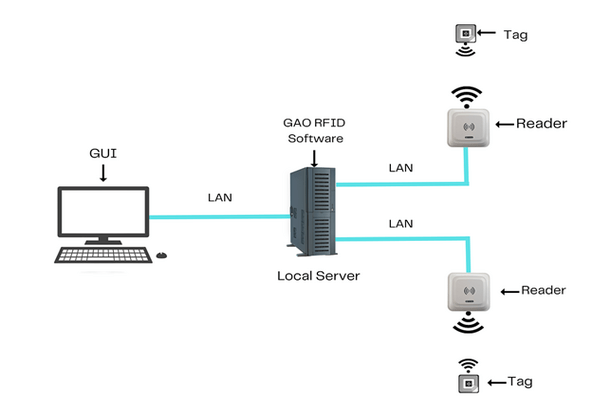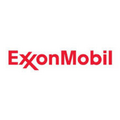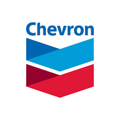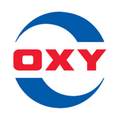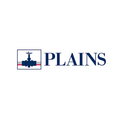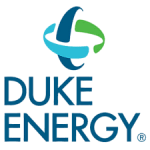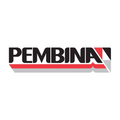The Oil and Gas Construction industry involves the design, construction, and maintenance of facilities for oil and gas exploration, drilling, extraction, transportation, and processing. It plays a crucial role in meeting global energy needs and is subject to safety and environmental regulations to ensure responsible development and management of natural resources.
GAO RFID Inc., a global top 10 RFID leader based in the cities of New York and Toronto, has served many companies in the Oil and Gas Construction industry.
GAO RFID Systems & Hardware for the Oil and Gas Construction
GAO RFID Inc. offers the largest selection of BLE gateways, BLE beacons, RFID readers, tags, antenna, printers, and integrated RFID systems for various industries, including the oil and gas construction industry.
BLE (Bluetooth Low Energy)
GAO offers advanced BLE gateways:
as well as versatile beacons with such important functions as temperature, humidity, vibration, and panic button:
- IP67 Rated BLE 2.45GHz Active RFID Wristband Tag w/ Panic Button
- BLE 2.45GHz Ultra Rugged Active RFID Pallet Tag/Beacon
- BLE 2.45GHz Active RFID Asset Tag/Beacon
GAO’s BLE technology is suitable for all kinds of industries, including the oil and gas construction industry.
UHF (Ultra High Frequency) RFID
GAO offers the largest selection of UHF RFID readers for various industries, including the oil and gas construction industry:
GAO RFID offers the widest choice of UHF RFID tags, labels, badges, wristbands for various industries, including the oil and gas construction industry:
and an array of antennas to address different applications:
HF (High Frequency), NFC (Near Field Communications) and LF (Low Frequency) RFID
GAO offers the largest selection of HF, NFC, and LF RFID readers for various industries, including the oil and gas construction industry:
- 134.2KHz ISO11784/5 FDX RFID Plug and Play Portable Reader
- 134.2 kHz LF Long Range Fixed RFID Reader
HF, NFC and LF RFID tags, labels, badges, wristbands for various industries, including the oil and gas construction industry:
and antennas:
GAO also offers RFID printers, Digital I/O adapters and relay controllers:
For embedded applications, GAO offers UHF, HF and LF RFID reader modules:
- UHF 860 – 960 MHz RFID Modules
- 13.56 MHz High Frequency RFID Modules
- 125 kHz Low Frequency RFID Modules
The RFID systems by GAO are highly popular for clients in the oil and gas construction industry:
People or workers tracking system:
Physical asset or operational equipment tracking system:
- GAO RFID Heavy Duty Machinery Asset Management System
- GAO RFID Construction and Industrial Machinery Rental Asset Management System
- Tool & Industrial Equipment Tracking System
- Asset Tracking Software
Personnel or people access control system:
Parking or vehicle control system:
Benefits of GAO’s RFID, BLE, IoT & Drones for the Oil and Gas Construction
RFID, BLE, IoT and drones technologies from GAO RFID Inc. offer many benefits for the the Oil and Gas Construction industry.
Applying RFID to oil and gas construction
RFID (Radio Frequency Identification) technology has the potential to revolutionize the oil and gas construction industry by improving supply chain management, increasing safety, and reducing costs. Here are some ways RFID can be applied:
- Asset Tracking: GAO RFID tags can track equipment, tools, and materials in real-time, improving inventory management and reducing theft.
- Safety Management: GAO’s RFID solution can monitor personnel and equipment movement, alerting workers in hazardous areas to improve workplace safety.
- Quality Control: GAO RFID tags can track materials and products to improve quality control.
- Maintenance and Inspection: RFID can track maintenance and inspection history to improve scheduling and reduce downtime.
- Supply Chain Management: RFID can track materials and products throughout the supply chain to improve management, reduce costs, and improve logistics planning.
Benefits of BLE Gateway and Beacons for oil and gas construction
BLE (Bluetooth Low Energy) gateway and beacons can offer significant benefits to the oil and gas construction industry, including:
- GAO’s BLE beacons increase workplace safety by tracking workers, equipment, and vehicles in a long range, alerting them when they enter hazardous areas.
- BLE beacons transmit real-time data such as temperature, pressure, and humidity, allowing for quick response to abnormalities and preventing equipment failure.
- BLE gateway can be accessed remotely for asset and equipment monitoring, improving supply chain management and reducing downtime.
- BLE beacons and gateway can be customized for specific industry needs, such as tracking equipment and assets in different parts of an oil and gas construction site.
Benefits of combining Drones with RFID for oil and gas construction
Combining drones with RFID technology can offer significant benefits to the Oil and Gas Construction Industry, including:
- Drones with GAO’s RFID readers improve inventory management, reduce manual labor, and prevent theft/loss of assets.
- Drones track quality and status of materials/products throughout supply chain, improving quality control and reducing risk.
- Drones with RFID readers track maintenance/inspection history, improving scheduling, reducing downtime, and extending equipment life.
Benefits of Combining IoT with RFID for oil and gas construction
Combining IoT (Internet of Things) with GAO’s RFID technology can offer significant benefits to the Oil and Gas Construction Industry, such as:
- IoT and RFID data analytics offer insights into equipment performance, asset utilization, and supply chain efficiency for improved decision-making and operations.
- IoT and RFID track maintenance and inspection history of equipment and assets, improving scheduling and extending equipment life.
- IoT sensors monitor quality of materials/products, and RFID tech reduces risk of using faulty materials, improving quality control.
- IoT and RFID automation streamlines processes like inventory management, equipment maintenance, and supply chain logistics, reducing manual labor, improving efficiency, and cutting costs.
RFID (Radio Frequency Identification) is a key technology of the IoT (Internet of Things) for the oil and gas construction industry. RFID technology allows the tracking and identification of assets, equipment, and materials in real-time, improving inventory management, supply chain efficiency, and safety. RFID tags can be attached to equipment and materials, enabling them to be automatically identified and tracked throughout the supply chain, from procurement to installation and maintenance. This allows companies to better manage inventory levels, reduce waste, and improve safety by ensuring that equipment and materials are used in the correct manner. Additionally, RFID technology can provide critical information for asset maintenance, reducing downtime and increasing operational efficiency. The use of RFID technology in the Oil and Gas Construction industry can lead to significant cost savings and operational improvements, making it a key technology for this industry.
GAO Helps Customers Comply with Standards, Mandates & Regulations
GAO RFID Inc. has helped many companies in the oil and gas construction industry to deploy RFID systems and to ensure such deployments complying with the applicable industry standards, mandates and government regulations:
- ANSI/ISA-100.11a-2011: This is the American National Standards Institute (ANSI) standard for wireless systems for industrial automation. It includes guidelines for the use of RFID in industrial settings, including the oil and gas industry.
- NIST SP 800-53: This is a set of guidelines from the National Institute of Standards and Technology (NIST) that outlines security controls for federal information systems and organizations. It includes guidelines for the use of RFID in secure environments, including the oil and gas industry.
- Pipeline and Hazardous Materials Safety Administration (PHMSA) regulations: The PHMSA is a US government agency that regulates the transportation of hazardous materials, including oil and gas. The agency requires the use of RFID technology to track the movement of hazardous materials in certain circumstances.
- Canadian Association of Petroleum Producers (CAPP) standards: CAPP is a Canadian industry association that represents oil and gas producers. It has developed standards for the use of RFID technology in the industry, including guidelines for asset tracking and inventory management.
- Canadian Centre for Cyber Security (CCCS) guidelines: The CCCS is a Canadian government agency that provides cybersecurity guidance to organizations in Canada. It has published guidelines for the secure use of RFID technology in industrial settings, including the oil and gas industry.
- API RP 10B-2: This is a recommended practice from the American Petroleum Institute (API) for RFID tagging of drill bits used in oil and gas drilling operations.
Case Studies of RFID Applications
Here are two cases of applying RFID in the oil and gas construction industry:
Suncor Energy is a Canadian-based integrated energy company that implemented an RFID system to track materials and assets at its oil sands facility in Alberta. The RFID system was used to track the movement and location of critical assets, such as pumps and valves, ensuring their availability for maintenance and repair. The system also helped to improve the efficiency of the supply chain by tracking the location and movement of materials and reducing inventory carrying costs.
Devon Energy is a US-based independent energy company that deployed an RFID system at its oil and gas production site in Oklahoma. The RFID system was used to track the location and movement of personnel and equipment on the site, allowing the company to improve safety and efficiency. The system used RFID tags attached to workers’ PPE and equipment, and readers installed at various points across the site. The system helped to reduce the time and effort required for manual tracking and ensured workers’ safety and security.
GAO Has Served the Oil and Gas Construction Extensively
GAO RFID Inc., one of the global top 10 RFID leaders, is based in the cities of New York and Toronto and it has deployed RFID, BLE and IoT projects for many leading companies in the oil and gas construction industry, including its various divisions such as:
Upstream: involves exploration and production of oil and gas, including drilling contractors, exploration companies, and production companies.
Midstream: involves transportation and storage of oil and gas, including pipeline companies, storage companies, and logistics providers.
Downstream: involves refining, marketing, and distribution of oil and gas products, including refineries, fuel distributors, and petrochemical companies.
Offshore: involves exploration, production, and transportation of oil and gas in offshore environments, including drilling companies, offshore service providers, and marine logistics companies.
Engineering and Construction: involves design, construction, and maintenance of oil and gas facilities, including engineering firms, construction companies, and maintenance contractors.
Equipment and Services: involves providing equipment and services to the oil and gas industry, including drilling equipment manufacturers, oilfield service providers, and environmental services companies.
Some of the leading companies in the oil and gas construction industry in the US:
Some of the leading companies in the oil and gas construction industry in Canada:


